 June is Lesbian, Gay, Bisexual, Transgender and Queer (LGBTQ+) Pride Month. This month-long celebration demonstrates how LGBTQ Americans have strengthened our country by using their talent and creativity to help create awareness and goodwill and to recognize the impact that lesbian, gay, bisexual and transgender individuals have had on history locally, nationally, and internationally.
June is Lesbian, Gay, Bisexual, Transgender and Queer (LGBTQ+) Pride Month. This month-long celebration demonstrates how LGBTQ Americans have strengthened our country by using their talent and creativity to help create awareness and goodwill and to recognize the impact that lesbian, gay, bisexual and transgender individuals have had on history locally, nationally, and internationally.
Although much work has been done in the fight against discrimination for the LGBTQ+ community, more is still needed especially when it comes to access to care and improved health outcomes. LGBTQ+ individuals include people from all races and ethnicities, religions, and social classes, yet they still face a high number of health disparities that include behavioral and physical health, and limited access to healthcare.
Some of the health disparities that the LGBTQ+ community faces include:

Mental/Behavioral Health
- Anxiety, depression, and suicide and suicidal thoughts (with LGBTQ+ youth being 2 to 3 times more likely to attempt suicide)
- Eating disorders
- Substance, alcohol, and tobacco abuse
- Attention deficit disorders and depressive disorders in transgender and/or gender nonconforming (TGNC) youth
- Body image disorders

Physical Health
- Lesbian and bisexual women have higher rates of breast cancer and cervical cancer
- LGBTQ+ individuals have higher rates of sexually transmitted infections
- Gay and bisexual men may have a higher risk of anal cancer and a high prevalence of hepatitis B
- Lesbians and bisexual females are more likely to be obese, which increases their risks for chronic health diseases

Access to Care
LGBTQ+ people have less access to the healthcare and tend to have a mistrust of the health care system:
- Less likely to have health insurance and less likely to fill prescriptions
- More likely to use the emergency room or delay getting care
- More likely to be refused health care services and be harassed by health care providers
- LGBTQ+ youth are more likely to be homeless and have an increased risk of poor physical mental health outcomes than heterosexual adolescents
- Aging LGBTQ+ individuals tend to have less family support to assist with health needs
By eliminating LGBT health disparities and enhancing efforts to improve LGBT health will ensure that these individuals can lead long, healthy lives.

Causes of health disparities faced by LGBTQ+ people
- The minority status of LGBTQ+ people
- A lack of specific education and training for health care workers
- A lack of clinical research on LGBTQ+ health-related issues
- Restrictive health benefits
- Limited role models
- Fear due to stigma, discrimination, and institutional bias in the health care system
The good news is that there are efforts being made to improve the health of the LGBTQ+ community and by understanding these efforts and getting involved will expedite this long overdue need.

Efforts to improve LGBTQ+ health
- Collecting sexual orientation and gender identity (SOGI) data in health-related surveys and health records in order to identify LGBTQ+ health disparities
- Appropriately inquiring about and being supportive of a patient's sexual orientation and gender identity to enhance the patient-provider interaction and regular use of care
- Providing medical students with training to increase provision of culturally competent care
- Implementing antibullying policies in schools
- Providing supportive social services to reduce suicide and homelessness among youth
- Curbing human immunodeficiency virus (HIV)/sexually transmitted infections (STIs) with interventions that work

What you can do
- Volunteer or get involved with the Trevor Project
- If you’re a healthcare provider who meets the standards of practice in caring for LGBTQ patients, list your practice with Gay and Lesbian Medical Association (GLMA)
- LGBTQ+ individuals can find a healthcare provider and resources at the GLMA’s website
- Be a friend or a supportive family member

